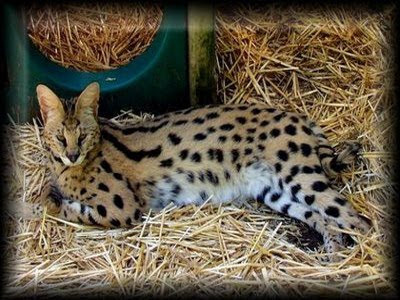13. Bengal Cats
Price: $ 800 - $ 3,000

Bengal Cats - Bengali cats is developed through the cross-breeding between the black-haired domestic cat with Asia leopard. The goal is to get the size and behavior of domestic cats, but the appearance and the color is like Asian leopard. Proper cat hybridization results, the more distant descendants, the more benign behavior. The ideal results is obtained after the third and fifth generations of descendants from the first. With this cat, you can pretend like Cleopatra stroke leopard :-) Aaum .. uh .. miaow!!
12. Snow Macaque
Price: $ 3,500

Snow Macaque - These species are threatened with extinction as more and more people damaging their habitat. A very strict license applied to anyone who wants to have these animals. Snow Macaque is a primate (smaller than usual) with age range of more than 25 years, and has a characteristic red face cash and not overgrown with hair. Do not remind us of the human figure snow Yetti?
11. Squirrel Monkey
Price: $ 4,000
Squirrel Monkey - Size makes squirrel called that. Generally, the squirrel monkey no more than 2 pounds (no more than 1 kg) and known to be very social, affectionate and calm. This character makes it very desirable, although some states forbid it. Well, cute!
Price: $4,000-$5,000
Chinese Crested Hairless Puppies - This dog weighs 2 to 5.5 Kg. Very excited, alert, and friendly. Including the most rare, these dogs easily sunstroke. Originally from Africa. His life ranged from 10 to 12 years. And reportedly, during that time, this dog can be relied upon as a very good friend. You have to think twice to take her in broad daylight.
Price: $4,000-$10,000

Savannah cat - Bred in a process similar to the Bengal cat, savannah cat is the result of crossbreeding between wild cats (serval) of Africa with a house cat. Savannah cat bred more difficult, given the African serval weighs 18 kg, wild, and marry the cat a smaller house is a separate problem. The pregnancy period between these 2 animals is also different. Therefore, savannah cat is more rare and expensive.
Price: $ 6,000
Mona Guenon - Original habitat in the tropical forests of West Africa, although these animals can adapt to any forest conditions. Therefore, in addition to permits and special licenses to possess, this does not include animals in danger.
7. Monkey Debrazzas
Price: $ 10,000
Monkey Debrazzas - Monkey is easily identified by their distinctive white beard and gray hair. Up to 22 years old. The price is expensive to make only a few people who can have it. Many people are disappointed when the baby primate was tame and gentle turn into malignant and not predictable as adults. Well, like keeping terrorists baby! Be careful.
6. Striped Ball Python
Price: $ 10,000
Striped Ball Python - Master Python Breeder, Bob Clark stated that he has the very exclusive ball phyton-striped. The main lines that make this animal very unique. More clearly, this ball-striped yellow line shows the edge of the black color. Indeed, apart from other snakes. Perhaps the beauty of the colors will be more 'feel' when the snake is wrapped around you....
5. Hyacinth Macaw
Price: $ 6,500-12,000

Hyacinth Macaw - All Macaws are very expensive. Hyacinth Macaw displays beautiful colors so vibrant. The price could be $ 20,000 a pair. Physically, these birds of about 1 meter in length and has a bright blue color. Wings expand to 1.2 meters. These birds have become popular pets in addition to the expensive price.
4. Reticulated Albino Type II Tiger Python
Price: $ 15,000
Reticulated Albino Type II Tiger Python - Bob Clark developed a rare species. These snakes for sale $ 15,000. Very rare. Dominance pattern that makes python tiger is very popular in the world of snakes.
3. Lavender Albino Python (Female)
Price: $ 20,000

Lavender Albino Python (Female) - Red-eyed snake is lavender in color behind the vibrant yellow. Provided also by Bob Clark. Rarity makes this snake demand is very high.
Harga : $60,000-$65,000
Chimpanzee - Chimpanzees are highly intelligent primates and most closely related to humans. It weighed about 52 kg, the male larger than females. Original habitat in Central Africa and West Africa. Though threatened with extinction, the animal still legalized in some states.
1. Son of the White Lion (White Lion Cubs)
Price: $ 138,000

Son of the White Lion (White Lion Cubs) - This is the most expensive. White lion - like a fairy tale - a very rare because its genes are recessive, but it did not include an albino. Eye color is similar to lions in general, and skin pigment layer is not. Because the price is expensive, demand eminence, maintenance, and its rarity, white lions, including one of the animals in the world's most difficult to obtain.













